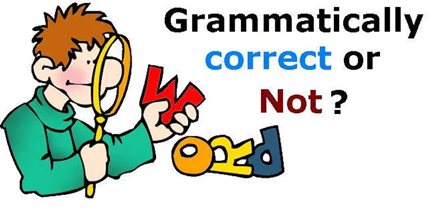Sentence Structure in English
By: Desi Indrawati

Source: linguistics-blog
Sentence structure in English grammar refers to how words, phrases, and clauses are arranged within a sentence. This structural arrangement, also known as syntax or syntactic structure, determines a phrase’s grammatical function or meaning.
Simple, compound, complex, and compound-complex sentences are the four fundamental categories of sentence forms in conventional grammar.
Sentence structure and meaning
“Since sentence structure is abstract in a manner that sounds and words are not, people are presumably less conscious of it than sounds and words. Sentence structure is also a fundamental component of all sentences. By examining samples from a single language, we may understand the significance of sentence construction. For example, the exact words might have multiple meanings in English depending on how they are organized. Think about the following:
- The generals’ ideas were met with opposition by the senators.
- The generals objected to the measures that the senators offered.
- Even if the sole distinction in the meanings of the two sentences is that of the first one, they are very different from each other.
Four types of sentence structure
Now that we’ve tackled “what is sentence structure,” let’s look more in depth at its different types.
1. Simple Sentences
The most basic type of English sentence is the simple structure. This is when a sentence is composed of just one independent clause – a clause that contains a subject (the noun acting the punishment) and predicate (the action being taken) and expresses a complete thought. Like all sentences, it can also contain a direct object (the noun receiving the action of a sentence) or an indirect object (the object for whom the action is being done).
Here are a few simple sentence examples:
- I didn’t go to the game.
- She was correct.
- The writer was out of ideas.
- The movie was over two hours long.
2. Compound Sentences
The compound sentence combines two or more independent clauses with a coordinating conjunction (or, and, but, yet, for, nor, so) or a semicolon.
Here are some examples:
- She was sick, so she didn’t go to school.
- Greg kept his distance; he knew he was a dangerous man.
- I was exhausted, but I worked all night.
- Mom was still at work, and Dad was out to dinner.
Notice how these sentences could be broken into two: “She was sick. She didn’t go to school.” “Mom was still at work. Dad was out to dinner.” That’s because these sentences contain 2 independent clauses, which can be turned into simple sentences.
3. Complex Sentences
Complex sentences consist of an independent clause and a dependent clause. A dependent clause is an incomplete thought (e.g., “Although I was sick, …” “Because he was gone, …”) and thus needs to be attached to an independent clause. It’s also known as a subordinate clause.
Some complex structure examples:
- If he was so funny, the whole crowd would have been laughing.
- I went to dinner because I was hungry.
- She turned her down because she was in love with someone else.
4. Compound-Complex Sentences
True to their name, compound-complex sentences combine the ideas behind compound and complex sentences: they contain at least two independent and dependent clauses.
Because they can be hard to parse, I’ve color-coded the independent clauses, the coordinating conjunction/semicolon, and the dependent clauses. Let’s take a look:
- Because he was injured, the team played with a short bench, and their rivals beat them soundly.
- I wondered what became of him; if he liked Chicago so much, it made no sense for him to up and leave.
- The teacher gave Jimmy a time-out because of his bad behavior, and we all laughed at him, reveling in the chaos he had wrought.
Sources:
Fernández, Eva M. and Cairns, Helen Smith. “Fundamentals of Psycholinguistics.” Wiley-Blackwell, 2011.
Nordquist, Richard. “English Language Sentence Structure.” ThoughtCo., 2019.
Provost, Rex. “What is Sentence Structure – Examples and Tips for Writers.” Studiobinder, 2022.


Comments :